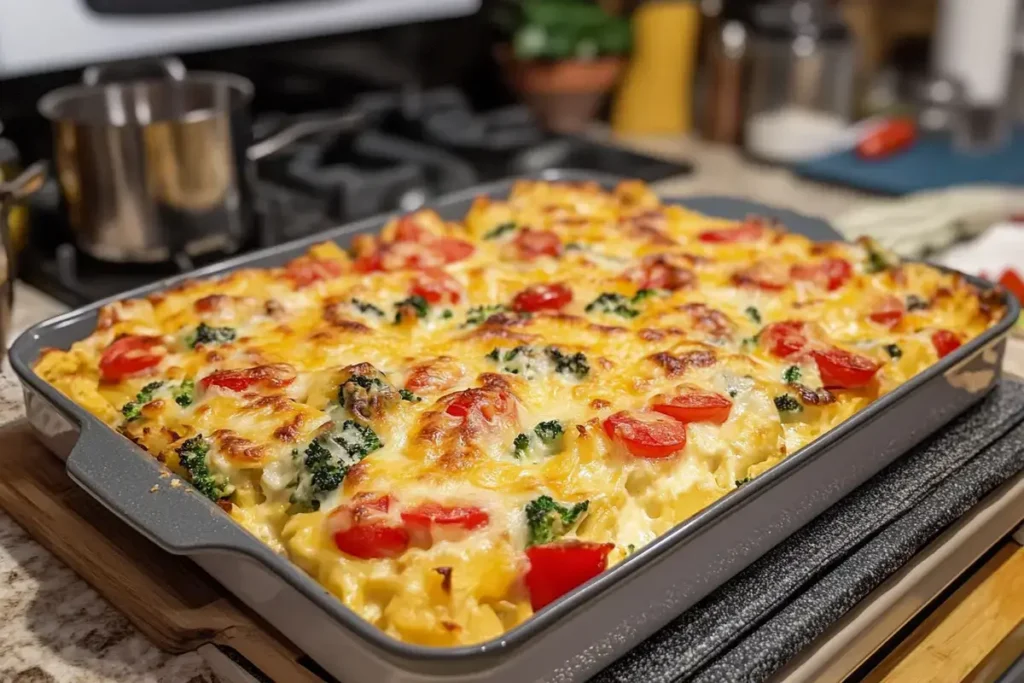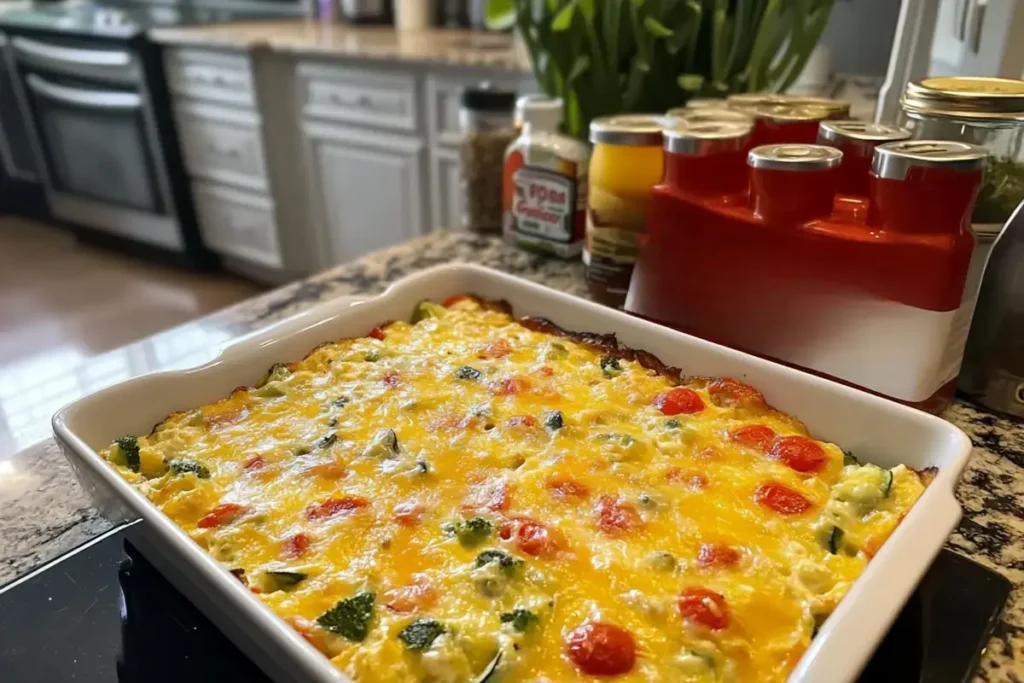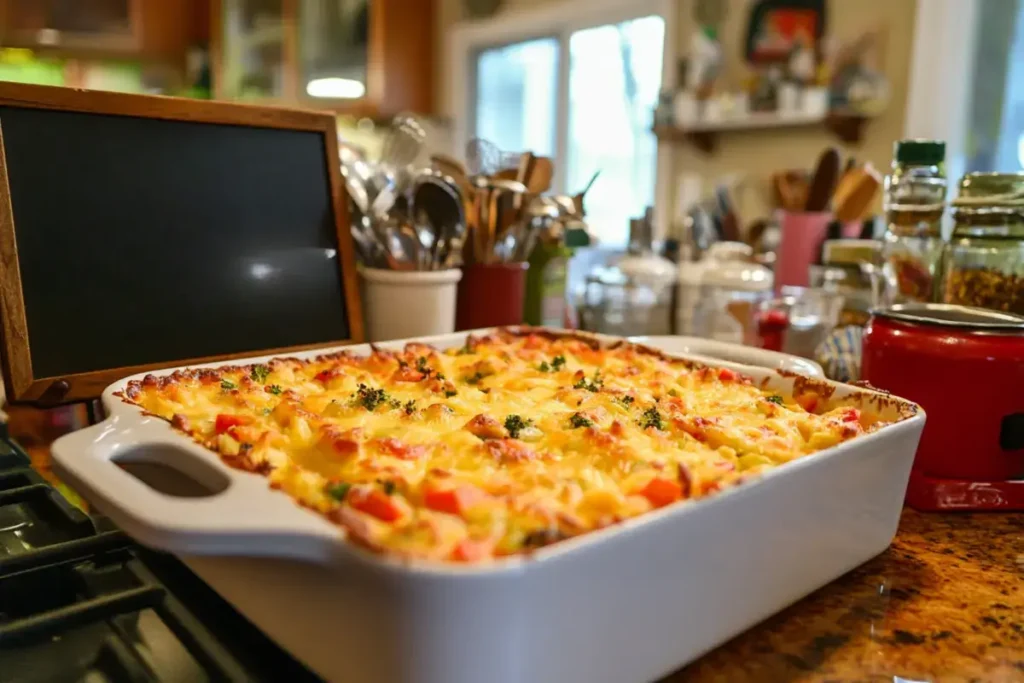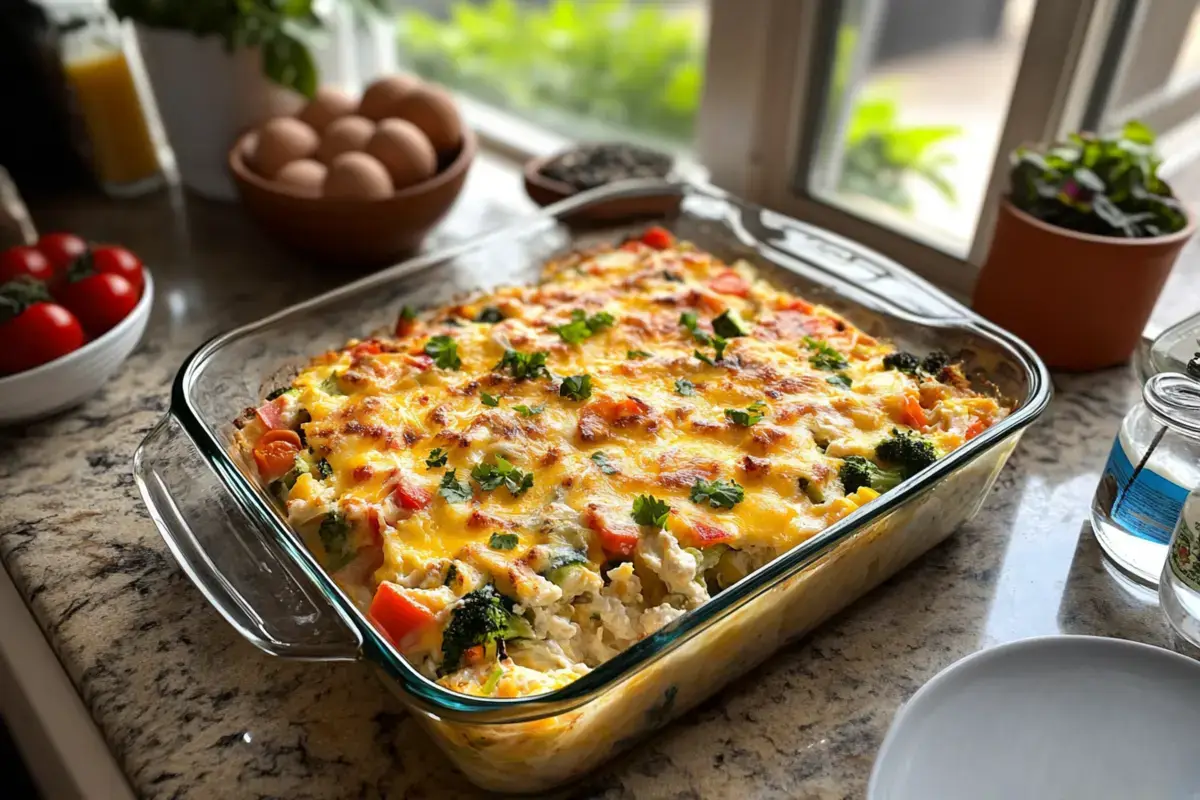Hey everyone, it’s Jessika from Boldy Recipes! Breakfast casseroles are my secret weapon for busy mornings, holiday brunches, and meal prep. This gluten-free version has become my absolute go-to it’s just as delicious as traditional versions, packed with protein, and nobody ever guesses it’s gluten-free. I’ve made this dozens of times for both gluten-free and regular eaters, and it always gets rave reviews. Let me show you how to make it perfectly every time.
Gluten Free Breakfast Casserole
Prep Time: 15 minutes
Cook Time: 45 minutes
Total Time: 1 hour
Servings: 8-10

Ingredients
For the Base:
- 1 pound breakfast sausage (ensure it’s gluten-free)
- 1 medium onion, diced
- 1 red bell pepper, diced
- 8 large eggs
- 1½ cups whole milk
- 1 teaspoon salt
- ½ teaspoon black pepper
- ½ teaspoon garlic powder
- ¼ teaspoon paprika
For the Body:
- 4 cups frozen hash browns (check label for gluten-free)
- 2 cups shredded cheddar cheese
- 1 cup shredded mozzarella cheese
- 3 green onions, sliced
- Fresh parsley for garnish (optional)
Instructions
Step 1: Prepare Your Pan
Preheat your oven to 350°F. Grease a 9×13-inch baking dish with butter or cooking spray. I also line mine with parchment paper for easier cleanup totally optional but highly recommended.
Step 2: Cook the Sausage and Vegetables
In a large skillet over medium heat, cook the breakfast sausage, breaking it into crumbles with a wooden spoon, until browned and cooked through (about 7-8 minutes). Add the diced onion and bell pepper, cooking for another 5 minutes until softened. Drain excess grease and set aside to cool slightly.
Step 3: Make the Egg Mixture
In a large bowl, whisk together eggs, milk, salt, pepper, garlic powder, and paprika until well combined and slightly frothy. This ensures even seasoning throughout the casserole.
Step 4: Assemble the Casserole
Spread the frozen hash browns evenly across the bottom of your prepared baking dish. You don’t need to thaw them first I use them straight from the freezer. Layer the cooked sausage mixture over the hash browns. Sprinkle 1½ cups of cheddar cheese and all the mozzarella evenly over the top.
Pour the egg mixture slowly over everything, making sure it distributes evenly. Use a fork to gently press down any ingredients floating on top, ensuring everything gets coated with the egg mixture.
Step 5: Add Final Cheese Layer
Top with the remaining ½ cup of cheddar cheese and the sliced green onions. This creates a beautiful, golden-brown top.
Step 6: Bake
Bake uncovered for 40-45 minutes, until the center is set (it shouldn’t jiggle when you shake the pan gently) and the top is golden brown. If the top browns too quickly, tent with foil for the last 10-15 minutes.
Step 7: Rest and Serve
Let the casserole rest for 10 minutes before cutting. This allows it to set properly so you get clean slices instead of a runny mess. Garnish with fresh parsley if desired.

My Expert Tips
Always verify ingredients are gluten-free. Check labels on sausage, hash browns, and any seasonings. Some brands sneak wheat in where you wouldn’t expect it.
Don’t skip the resting time. Those 10 minutes make the difference between a cohesive casserole and a soupy mess on the plate.
Make it ahead. Assemble everything the night before, cover tightly, and refrigerate. Add 10-15 minutes to baking time if going straight from the fridge to the oven.
Customize the fillings. I swap in cooked bacon, ham, or even vegetarian sausage. Mushrooms, spinach, and different cheeses all work beautifully.
Storage
Refrigerator: Store covered for up to 4 days. Reheat individual portions in the microwave for 1-2 minutes.
Freezer: Freeze individual portions wrapped in foil for up to 3 months. Thaw overnight in the fridge and reheat.
Variations I Love
Southwestern: Add diced green chiles, use pepper jack cheese, and top with salsa and avocado
Veggie-Loaded: Skip the sausage and add mushrooms, spinach, tomatoes, and zucchini
Breakfast for Dinner: Add crispy bacon and serve with fresh fruit

FAQs
Q: Can I use fresh potatoes instead of frozen hash browns?
A: Yes! Dice 4 cups of potatoes, parboil for 5 minutes, drain well, and use as directed. They must be mostly cooked first.
Q: Is this recipe dairy-free adaptable?
A: Absolutely. Use dairy-free cheese and substitute milk with unsweetened almond or oat milk. The texture will be slightly less rich but still delicious.
Q: Why is my casserole watery?
A: Usually from not draining the sausage well or adding too much milk. Also, make sure to let it rest 10 minutes it continues setting during this time.
Q: Can I double this recipe?
A: Yes, but use two 9×13 pans rather than one larger pan. A too-thick casserole won’t cook evenly in the center.

